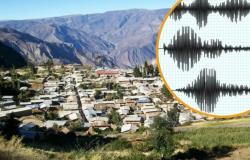On May 23, 2024, the National Focal Point (NFP) of the International Health Regulations (IHR) of Mexico informed PAHO/WHO a confirmed case of human infection with the avian influenza A(H5N2) virus detected in a resident of the State of Mexico who was hospitalized in Mexico City.
This It is the first laboratory-confirmed human case of infection by the influenza virus A(H5N2) reported worldwide and the first infection by the H5 avian virus in a person reported in Mexico. Although The source of exposure to the virus in this case is currently unknown.A(H5N2) viruses have been reported in poultry in Mexico. According to the IHR (2005), a human infection caused by a new subtype of influenza A virus is an event that has the potential to have a high impact on public health and must be notified to WHO. Based on available information, WHO assesses how under the current risk that this virus represents for the general populationl.
The infected person, 59 years old, had multiple underlying medical conditions. The patient’s relatives reported that he had already been bedridden for three weeks, for other reasons, before the onset of acute symptoms.
On April 17, the patient developed fever, difficulty breathing, diarrhea, nausea, and general malaise. On April 24, he sought medical attention, was hospitalized at the “Ismael Cosio Villegas” National Institute of Respiratory Diseases (INER) and FHe died that same day due to complications from his condition..
Real-time polymerase chain reaction (RT-PCR) results from a respiratory sample collected and analyzed at INER on April 24 indicated a non-subtypeable influenza A virus. On May 8, the sample was sent for sequencing to the Laboratory of Molecular Biology of Emerging Diseases Center for Research in Infectious Diseases (CIENI) of the INER, where it indicated that The sample was positive for influenza A(H5N2). On May 20, the sample was received at the Institute of Epidemiological Diagnosis and Reference (InDRE) of the National Influenza Center of Mexico, for analysis by RT-PCR, obtaining a positive result for influenza A. On May 22, the sequencing of the sample confirmed that the influenza subtype was A(H5N2).
CONTACT INVESTIGATION
No further cases were reported during the epidemiological investigation. Of the 17 contacts identified and followed up at the hospital where the patient died, one reported a runny nose between April 28 and 29. Samples taken from these hospital contacts between May 27 and 29 tested negative for influenza and SARS-CoV 2. Twelve additional contacts (seven symptomatic and five asymptomatic) were identified near the residence of the affected person. Samples of pharyngeal exudate, nasopharyngeal swabs, and serum were obtained from these individuals. On May 28, InDRE reported that all twelve samples from close contacts to the patient’s residence tested negative for SARS-CoV-2, influenza A, and influenza B, as determined by RT-PCR. The results of the serological samples are pending.
In March 2024, an outbreak of highly pathogenic avian influenza A(H5N2) was detected in a backyard poultry farm in the state of Michoacán, bordering the State of Mexico where the patient resided..
Additionally, in March 2024 An outbreak of low pathogenic avian influenza (LPAI) A(H5N2) was identified in poultry in Texcoco, Mexico stateand a second outbreak of IABP A(H5N2) in April in the municipality of Temascalapa in the same state. Until now, It has not been possible to establish whether this human case is related to recent outbreaks in poultry..
In 2022 a study was published that describes the continued circulation of low pathogenic H5N2 avian influenza viruses in Mexico and its spread to other countries.
Animal influenza viruses normally circulate among animals, but They can also infect humans. Infections in humans have been acquired mainly through direct contact with infected animals or contaminated environments.
Avian influenza virus infections in humans can cause upper respiratory tract infections from mild to severe and can be fatal. Conjunctivitis, gastrointestinal symptoms, encephalitis, and encephalopathy have also been reported.
PUBLIC HEALTH RESPONSE
Local and national health authorities also implemented monitoring and surveillance of influenza-type respiratory diseases (ILI) and severe acute respiratory disease (SARI) in neighboring municipalities (within the same health region), in order to analyze the behavior and trends of the respiratory syndromes and viruses in the region. Also analysis of the trends of pneumonia and bronchopneumonia, acute respiratory infections and conjunctivitis by the health services of Mexico City and the State of Mexico.
As well as identification of transmission chains and risk factors in the municipality of residence of the patient, State of Mexico and surrounding areas; and training on the National Guide for preparation, prevention and response to an influenza outbreak or zoonotic event at the animal-human interface.
He contacted the animal and environmental health authorities to strengthen surveillance activities in poultry and wild birds near the residence of the affected person and areas with a history of outbreaks of low-pathogenic avian influenza A(H5N2).
WHO RISK ASSESSMENT
Whenever avian influenza viruses circulate among poultry, there is a risk of infection and small groups of human cases due to exposure to infected poultry or contaminated environments. Therefore, sporadic human cases They are not unexpected. Human cases of infection with other H5 subtypes, including A(H5N1), A(H5N6) and A(H5N8), have previously been reported. The available epidemiological and virological evidence suggests that A(H5) viruses from previous events have not acquired the capacity to maintain transmission between humansso the current probability of sustained person-to-person spread it is low. According to the information available to date, no further human cases of A(H5N2) infection have been detected associated with this case.
WHO RECOMMENDATIONS
Improved surveillance in humans must consider the behavior of the population regarding the search for medical attention. It could include a variety of active and passive health care and/or community-based approaches, including active screening in hospitals and of groups who may be at higher occupational risk of exposure, and inclusion of other sources such as traditional healers, doctors private and private diagnostic laboratories.
In the case of a confirmed or suspected human infection caused by a novel influenza A virus with pandemic potential, including avian influenza virus, thorough epidemiological investigation is required (even while awaiting confirmatory laboratory results) history of exposure to animals and/or travel. It should be carried out along with contact tracing. Epidemiological research must include early identification of unusual events that could indicate transmission of the new virus from person to person. Clinical samples collected from suspected human cases should be analyzed and sent to a WHO Collaborating Center for further characterization.
Travelers to countries with known outbreaks of animal influenza farms should be avoidedcontact with animals in live animal marketsentry to areas where animals may be slaughtered or contact with any surface that may have been contaminated with animal feces. Travelers should also wash their hands frequently with soap and water. Travelers should follow good food safety and hygiene practices. If infected people from affected areas travel abroad, their infection may be detected in another country during the trip or after arrival. If this happens, Further spread at the community level is considered unlikely, as this virus has not acquired the ability to transmit easily between humans..
The OMS does not recommend special controls for travelers at points of entry or restrictions regarding the current status of influenza viruses at the human-animal interface.






